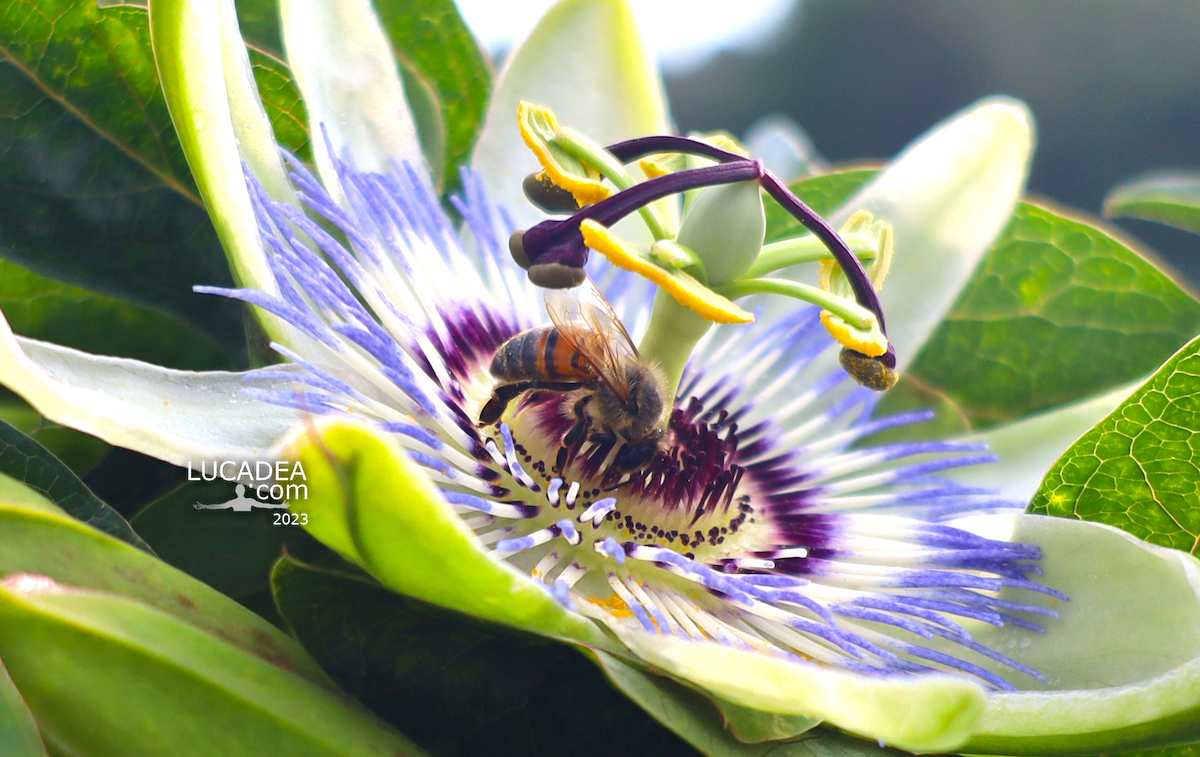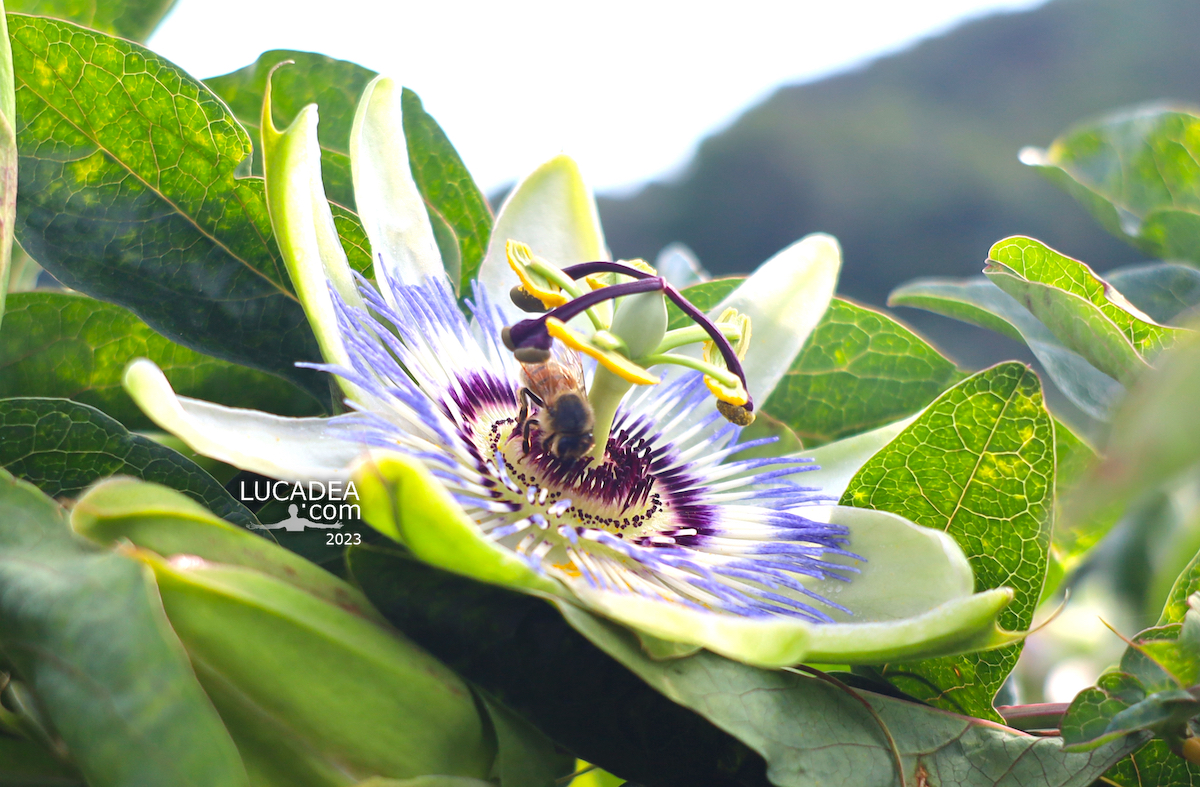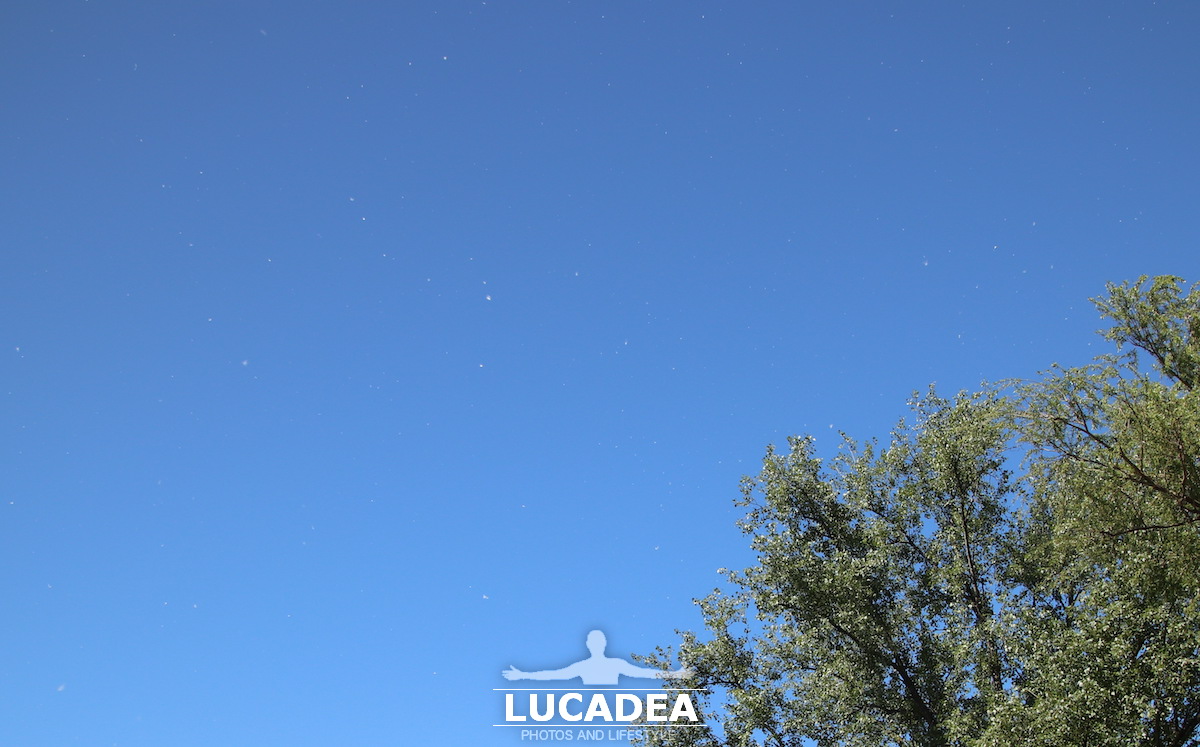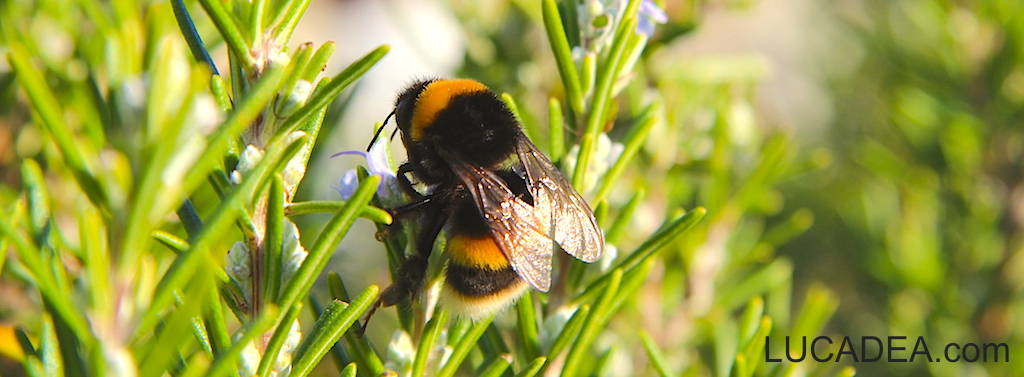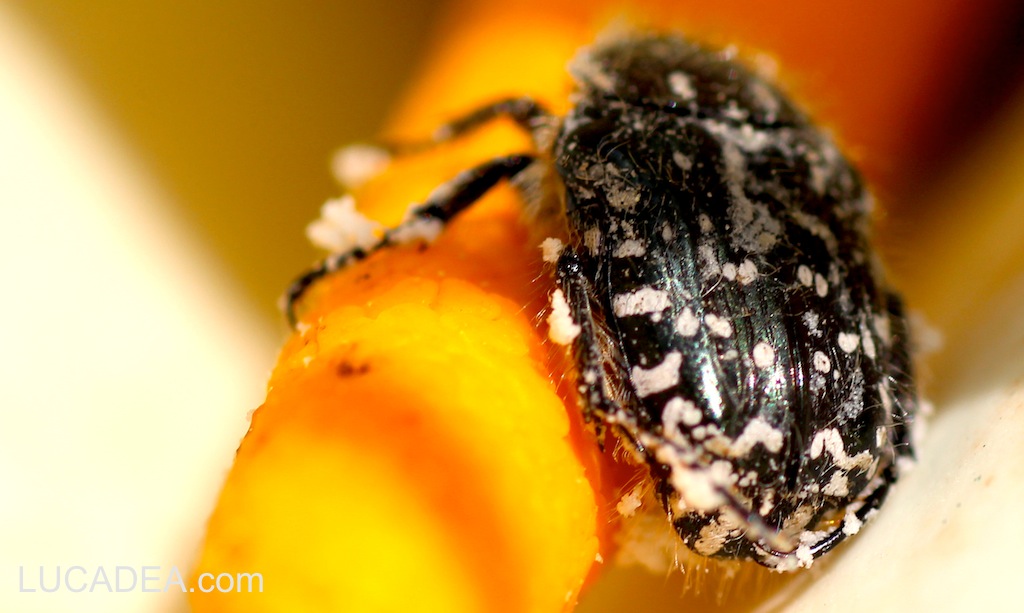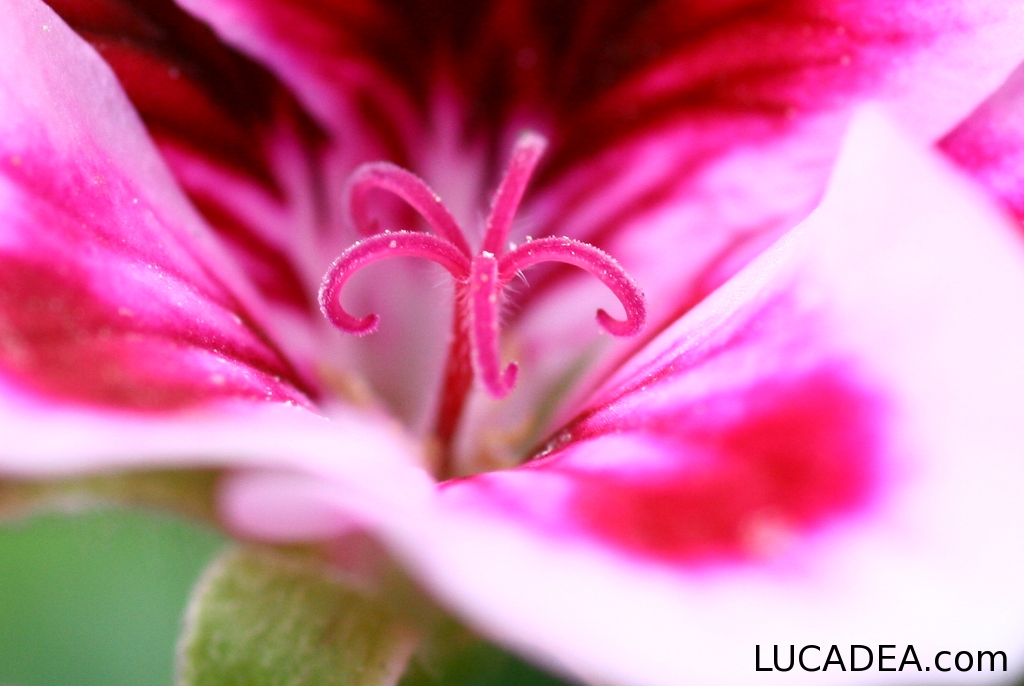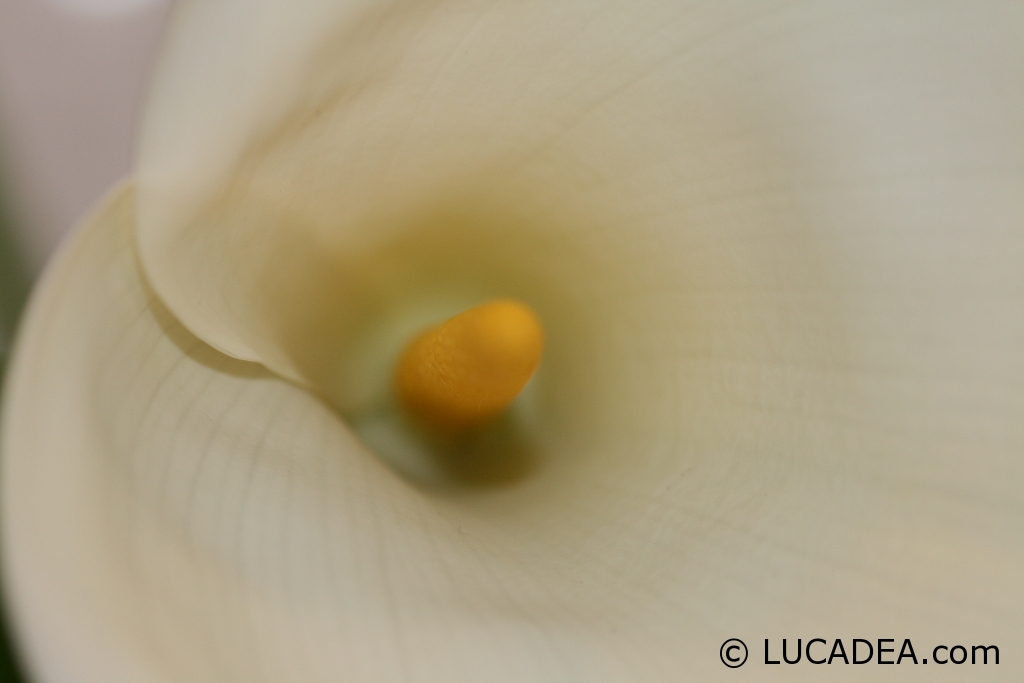A bee while immersed in pollen from a passion flower.
One of the flowers I love to photograph most is the passion flower.
The kaleidoscope of colors fascinates me greatly.
At that moment there was also a beautiful bee that was stealing the nectar.
Do you know this flower?
Add your own comment or go to the bottom of the site to read what other visitors have written.
Photo taken with Canon EOS RP and lens Canon RF 24-50.
The name of the genus, adopted by Linnaeus in 1753 and meaning “passion flower” (from the Latin passio = passion and flos = flower), was attributed to it by the Jesuit missionaries in 1610, due to the similarity of some parts of the plant to the religious symbols of the passion of Jesus: the tendrils to the whip with which he was flagellated, the three styles to the nails, the stamens to the hammer, the corolla rays to the crown of thorns.
Continue and learn more on Wikipedia

